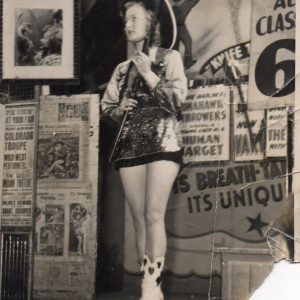Eli Bridge, A Manufacturer Profile
Next up in our ongoing series of amusement ride manufacturer profiles, is the long established American company of Eli Bridge.
The founder W.E. Sullivan visited the original Ferris Wheel at the Columbian Exposition in 1893. He (like George Washington Gale Ferris) owned a bridge building company. After his ride he became fascinated by the ride and decided to build one of his own. In collaboration with the machinist James H Clements they began construction of their own wheel.
This debuted in Jacksonville’s Central Park and was called the Big Eli Wheel. The ride was a success and Sullivan set up a company to manufacture his wheels.
Their first wheels were powered by 6h.p. huber steam engines and came in two sizes, 45ft portable models and 50ft park based designs. There was also a 55ft ‘Aristocrat’ model.

The company was originally located in Roodhouse, Illinois, next to a railway track, allowing for easy distribution around the country. In 1919 a new purpose built building was erected in Jacksonville, also next to the railroad. The company has been there ever since. It’s 76,000 sq ft facility contains a room tall enough to erect a big wheel in.

Modern Eli Bridge Wheels
The company still produces wheels to this day. A modern Eli Bridge, is, truth told, little changed from the earlier models. Sure, there is no doubt the construction will use moderner materials and methods. But the look and feel of the ride definitely contains the same DNA. That isn’t meant as a criticism. The fact is the early formula worked well, and still works well, so why change it?
One major change is the drive system. For generations, the wheel used a wire rope, that passed through a pulley which was rotated by an electric motor. The system worked fine, and still does as hundreds of wheels around the world continue its use. It did however have a couple of disadvantages. The rope gradually stretched, and as it did the drive began to slip. Murphy’s law would dictate this happened just as you got busy. The other failure was when the rope snapped. A sensible operator would keep a spare, and could change it relatively quickly, but it is still inconvenient and would lose you revenue.

Rim Drive
To counter the wire rope issues, the company has now switched to rim drive systems. This works by attaching a flat rim to one side of the ride. An electrically driven wheel would contact the rim and as it rotated, would rotate the ride. No slipping or snapping and a much more precise regulation of the speed available from a modern inverter driven control system.

Scrambler A New Chapter
1955 brought a new chapter for the company, with the launch of its Scrambler ride, the first non wheel addition to its portfolio. Known over here as a ‘Twist’ the ride took the American amusement industry by storm, and is still prevalent at funfairs around the world today, albeit in many versions from many different manufacturers.

Other Products
They also sell a couple of children’s rides, including the quirky Spider Mania, to which I can’t really find a comparable ride in the UK.

A line of fire pits for camping expeditions and Boy Scout troops round off the companies product list.
. One quirky fact is that the word Bridge was deliberately left in the company name, so that they could still build bridges, their original business model. Though records indicate that since they started selling wheels, they have only actually built one bridge.






